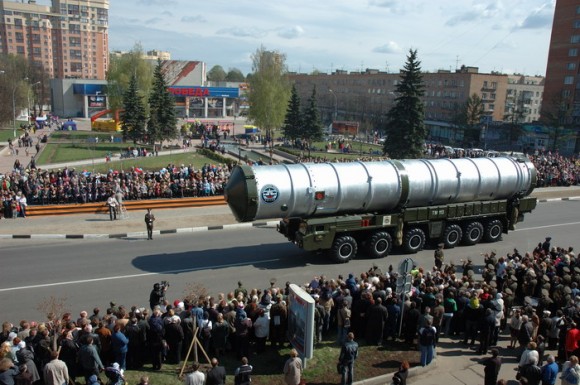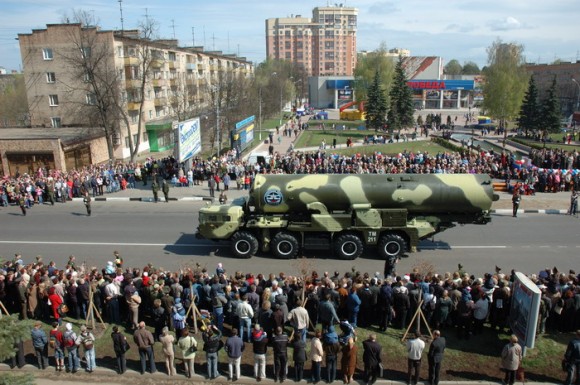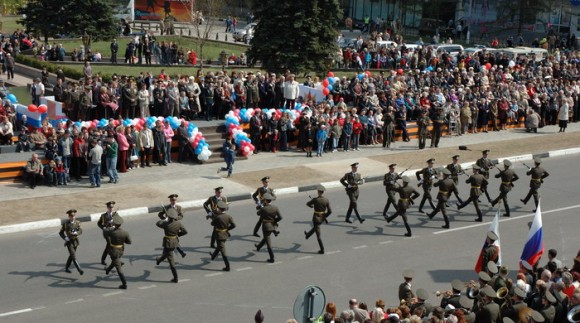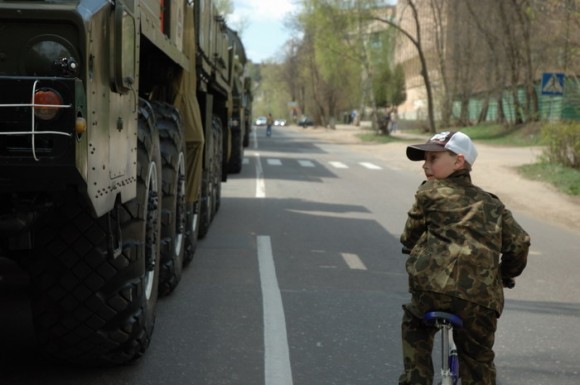Igor Sutyagin — yes that Igor Sutyagin — has published a fascinating occasional paper for RUSI entitled, Atomic Accounting: A New Estimate of Russia’s Non-Strategic Nuclear Forces.
Apparently, the Russian stockpile may not be quite as large as we believe.
How many Russian tactical nuclear weapons (and what kind) is a popular parlor game. Previous efforts at accounting including Arbatov, Arbman and Thornton, and a bag of locusts, er, various CNS experts. Classified estimates, contained in a Wikileaks cable, are 3,000-5,000 Russian tactical nuclear weapons.
The general view has been that Russia has many more tactical nuclear weapons than the United States. The appeal of the “whole enchilada” — a treaty covering all nuclear weapons — is that would purportedly allow the US to trade our advantage in strategic reserve warheads for their advantage in s0-called nonstrategic weapons. (I should add that I am not very hopeful about such an approach.)
Sutyagin concludes the disparity may be much smaller than we imagine. (Small enough, in fact, to make the “whole enchilada” palatable.) Sutyagin used open source publications to identify the rules for assigning warheads to systems, inferring the number of operational warheads from this arrangement. He concludes that Russia holds ~1,000 “operationally assigned” nonstrategic warheads, out of stockpile of ~1,200. (Remaining warheads, like their American counterparts, may remain awaiting dismantlement, of course, with the added bonus that Russian nuclear weapons have much shorter service lives.) The entire paper is fascinating and I’ve only just begun to think about what it means.
Of particular interest to me are Sutyagin’s observations about the Moscow ABM system. Regular readers know that I think one way to start our dialogue on tactical nuclear weapons is to begin with the easiest (and most worrisome) warheads — those assigned to the Moscow ABM system. (For a longer account of my proposal to ban nuclear-armed missile defenses, see my post Banning Nuclear Armed ABMs.)
Sutyagin argues that the Moscow ABM system still has warheads assigned to it, but that Russia is attempting to making the system non-nuclear. (Pavel Podvig, at Russian Strategic Forces, has made a similar observation.)
This is a perfect time to press to arms control on nuclear-armed missile defenses (and nuclear-armed air defenses, if any). If the nuclear-armed system really is headed toward obsolescence, we have an opportunity to practice transparency and confidence building in a relatively safe environment. We might also value the opportunity to lock-in Moscow’s commitment to a non-nuclear defense of the capital before decision-makers change their minds. In any event, even if we do nothing, I will be glad to see Moscow stop relying on nuclear weapons to “protect” the capital.
The image at the top of the post is from a pretty awesome collection of images from a 2006 parade of Russian Space Forces. Here are some more.







The numbers don’t seem to differ as much as it would appear.
Hans Kristensen’s Nuclear Notebook estimates “approximately 2,000 nonstrategic nuclear warheads assigned for delivery by air, navy, and air-defense forces.”
Sutyagin’s study estimates 875-1055 “operationally assigned”, 155 “assigned to temporarily unavailable
platforms”, 400 “strategic reserves”, 50 “spares” and 330 “undergoing refurbishment”. For a total of 1810-1990 warheads.
Nuclear Notebook makes no difference operationally assigned and non-assigned tactical warheads, while Sutyagin does. Since neither type is actually deployed in the field (all are held in central storage in various stages of readiness), the difference between the two feels academic to me. The overall number of warheads is still around ~2000 in most estimates, including this one.
Additionally to this, Sutyagin’s estimation of Russian reserves of tactical warheads is simply a guess (one-third of deployed). It’s as good a guess as any, but let’s not kid ourselves here. While the study is interesting in its analysis of operational deployments, I highly doubt that it offers any kind of political avenue for anything. After all, the fate of nuclear weapons is political, not operational, so why make a distinction for operational and non-operational units?
Politically, a nuclear device not assigned to an operational military unit is something a nation will likely use as a diplomatic bargaining chip if they are given even a modest incentive to do so, whereas an operational weapon is likely to reflect a percieved national security requirement. That kind of nuke is going to be much harder to negotiate out of existence. And, for that matter, much more likely to be used if the politicians screw up badly enough.
Agreed that most of what we (including Sutyagin) have in this area is guesswork; it’s still important enough that we want the best-educated guesses we can get.
Jeffrey,
It would be great if you could start a discussion on Albright’s analysis of the AP graph:
http://www.isisnucleariran.org/assets/pdf/AP_Graphs_dec_19_2012.pdf